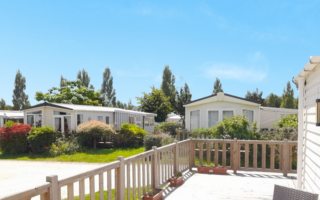Jazz festivals in France
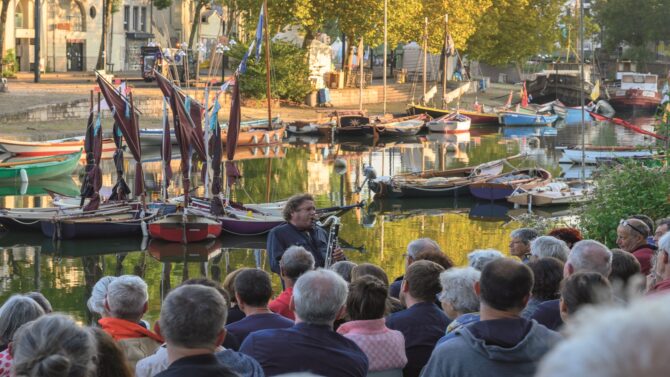
For jazz lovers, one of these three locations in Normandy, Loire- Atlantique and Gascony could be ideal, says Carolyn Reynier…
My youngest brother loves jazz and yearns to buy a home in France, so this is for him! I’ll be looking at property in and around three great French jazz festival venues. Firstly, Jazz sous les pommiers takes place from 4 to 11 May 2024 in Coutances in Manche, Normandy. This is a land of Cotentin cider, inland bocage and coastal villages.
Further south in Nantes, Loire-Atlantique, you can enjoy Les Rendez-vous de l’Erdre from 26 August to 1 September. Listen to jazz on the quays of Nantes and in 14 villages along the River Erdre and Nantes- Brest canal while admiring la belle plaisance – pleasure boating, flotillas of small elegant boats (some of them historic monuments).
We end our journey in Gers, Occitanie, land of foie gras, armagnac, and the famous Jazz in Marciac festival (18 July to 4 August 2024). This bastide town in southern Gascony – a ‘commune slow et engagée’ and also a Station Verte (the top French ecotourism label) – is not far from mountains and ocean. We have lots to see, so let’s get going!
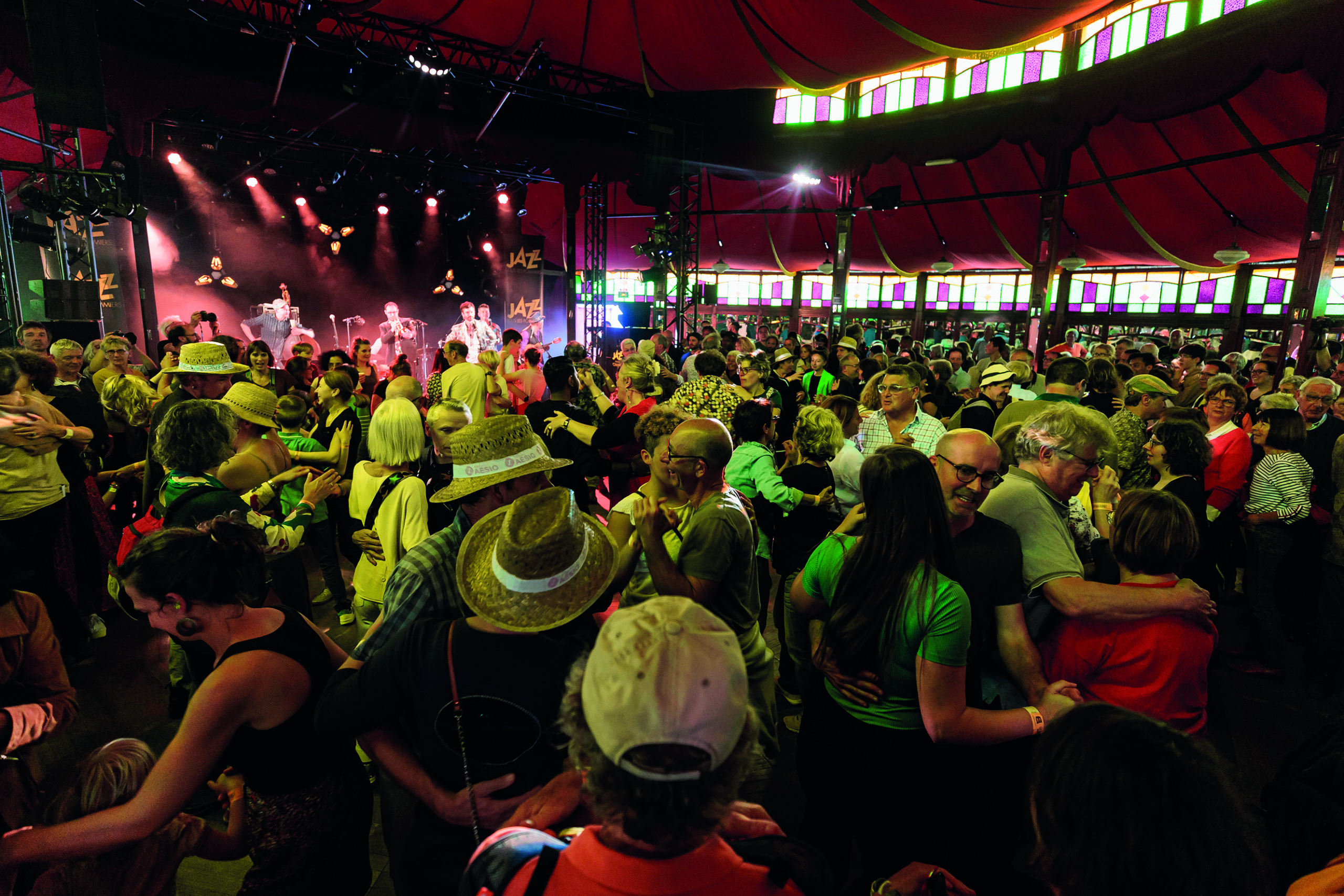
Jazz sous les Pommiers, Coutances, © PIERRE MEYER
NORMANDY
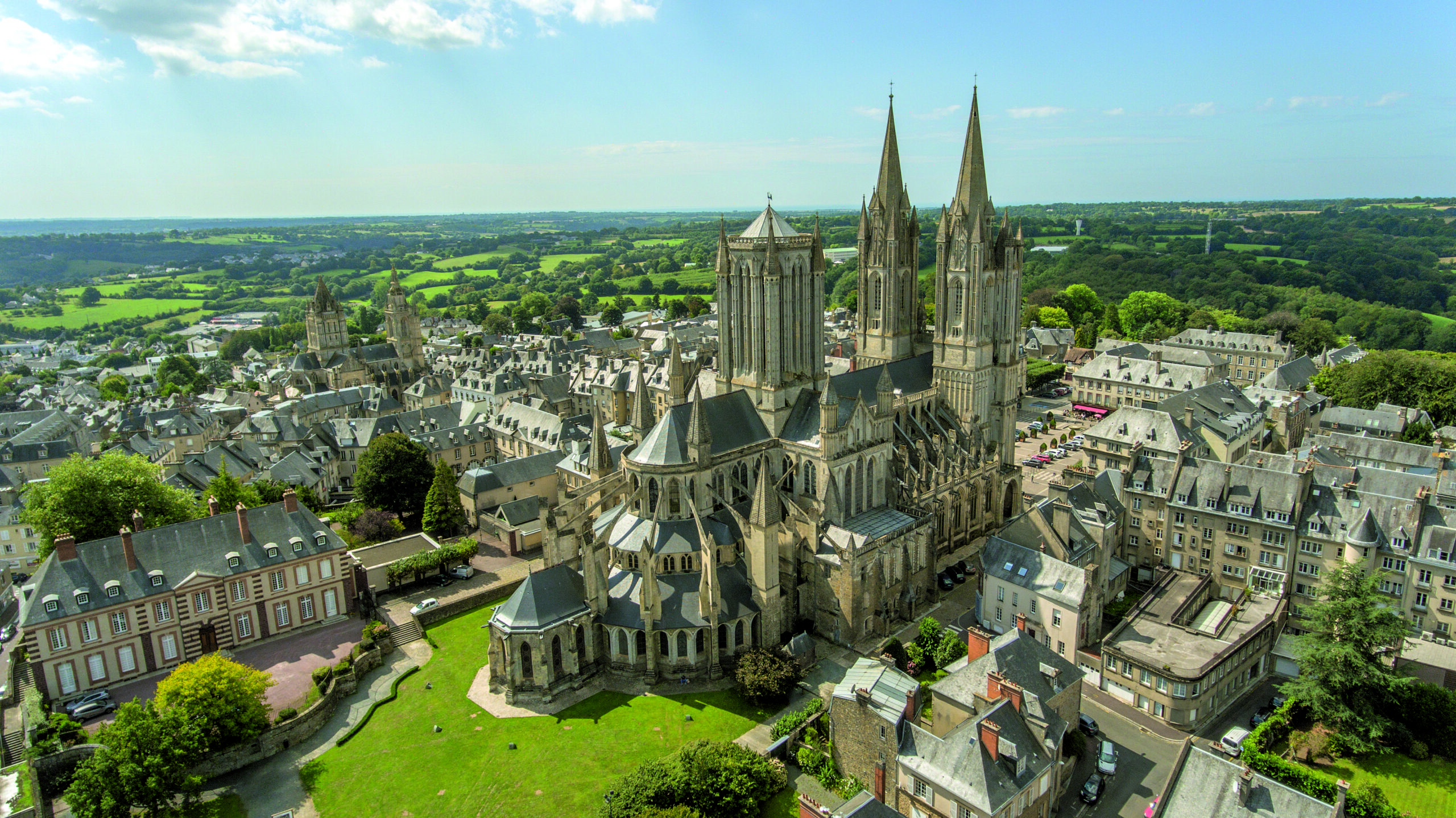
Aerial view of the 13th-century Norman Gothic Coutances cathedral, jazz at sunrise © JEAN-MICHEL MEUNIER, JIMPROD/COUTANCES TOURISME
Coutances was badly bombed during the Second World War, says Didier Lemariey of Cabinet Faudais. What remains of the ancient town centre lies within three roads below the cathedral built on a hillock. Narrow lanes and pavements run down between small, old stone, slate-roofed, terraced houses, often making access on foot and by car difficult. If you want to buy a house in the historic centre some have a small rear garden – prices are around €2,000/m². You’ll pay the same for a 50m² apartment in one of the post-war apartment blocks close to the cathedral. If you prefer the bocage, that quintessential Norman landscape of hedged farmland, consider Monthuchon, Gratot and Bricqueville-la-Blouette.
The region is not expensive compared with the rest of France, Didier says: “You can find presentable houses here with two or three bedrooms for under €200,000.” Many clients can no longer cope with the heat elsewhere and don’t want to be too far from Paris or the sea. True, this demand puts up prices “but we’re still very, very reasonable”. Coutances has a dynamic long-term let market. You can easily invest in €100,000-€130,000 properties and will have no problem renting them out, he says.
Coutances is a lively little town of fewer than 8,500 inhabitants with a railway station and shops and services you’d expect in much larger towns. Relative to its size, it has the highest student population in the department with various general lycées. The townsfolk are very involved with Jazz sous les pommiers. A street artist paints frescoes on shop windows, often associating the music with the owner’s wares.
PAYS DE LA LOIRE
Heading south, I spoke to Pascale Foucher at Estuaire Immobilier at Blain, one of the jazz venues on the Nantes- to-Brest canal. In the historic centre of this Gallo-Roman town you find small stone terraced houses, which may have attics for conversion and small front and back gardens. Prices are about €200,000. Some properties have shops on the ground floor and unoccupied living space for renovation above. Post-1960 homes – detached with gardens – sell for around €250,000-€350,000 depending on location. Fine bourgeois townhouses (150m²) with high moulded ceilings, wrought-iron railings and lovely gardens will cost you around €400,000- €450,000. These properties have retained the soul of the old house, says Pascale. A one-bedroom apartment in a modern residence will cost €115,000-€120,000.
The port of Blain (the jazz venue) is rather cut off from the town, so work is underway to renovate the town centre and create a main axis towards the port to reintegrate it into the town. There may be property for sale here in the future.
Today there are plenty of new post-1990 estates. Prices range from €220,000 to €380,000 for the larger houses; gardens are 350m²-450m². Nearby St-Omer-de-Blain was heavily bombed during the Second World War, so there are few ancient stone houses here today, although new ones have been built in stone, says Pascale. Have a look, too, at tiny St-Émilien-de-Blain. Both have their own church steeple and schools but belong to Blain, giving a total population of around 10,500.
La Chevallerais and Le Gâvre are also jazz venues. La Chevallerais on the canal is a lovely place for cycling, walking and riding. Although there are no waterside properties (the canal can flood and is in a protection zone), there are small stone houses in the centre and two large housing estates close by. Le Gâvre to the north is known for its 4,500 hectare state-owned forest – the green lung of Loire-Atlantique.
Pascale says that Nort-sur- Erdre to the east – where the Erdre river joins the canal, and another jazz venue – has a much more developed port. It also hosts another popular music festival, La Nuit de l’Erdre (4-7 July 2024). The types of property available are similar to Blain, but prices are a bit higher. Nort-sur-Erdre, with all the necessary shops and services, particularly attracts Nantais buyers, thanks to the railway station and tramway – known as the tram/train – which gets them quickly into Nantes.
Loire-Atlantique is an important employment basin, so there’s an excellent long-term let market for the investor, says Pascale. There’s less demand for seasonal letting, although the area does attract cyclists and walkers. The 1,300km-long Atlantic coast Vélodyssée cycle path passes nearby; the canal path is one of the pilgrim trails on the Camino de Santiago (the Way of St James) to Santiago de Compostela in northwest Spain.
You can also find old properties for renovation (almost a third of Pascale’s portfolio). They either need jazzing up/modernising or complete renovation. Nantes is 25 minutes away by bus from Blain, or train from Nort-sur- Erdre. “Then we’re less than an hour from the sea, the ocean – that’s a real plus.”
GASCONY
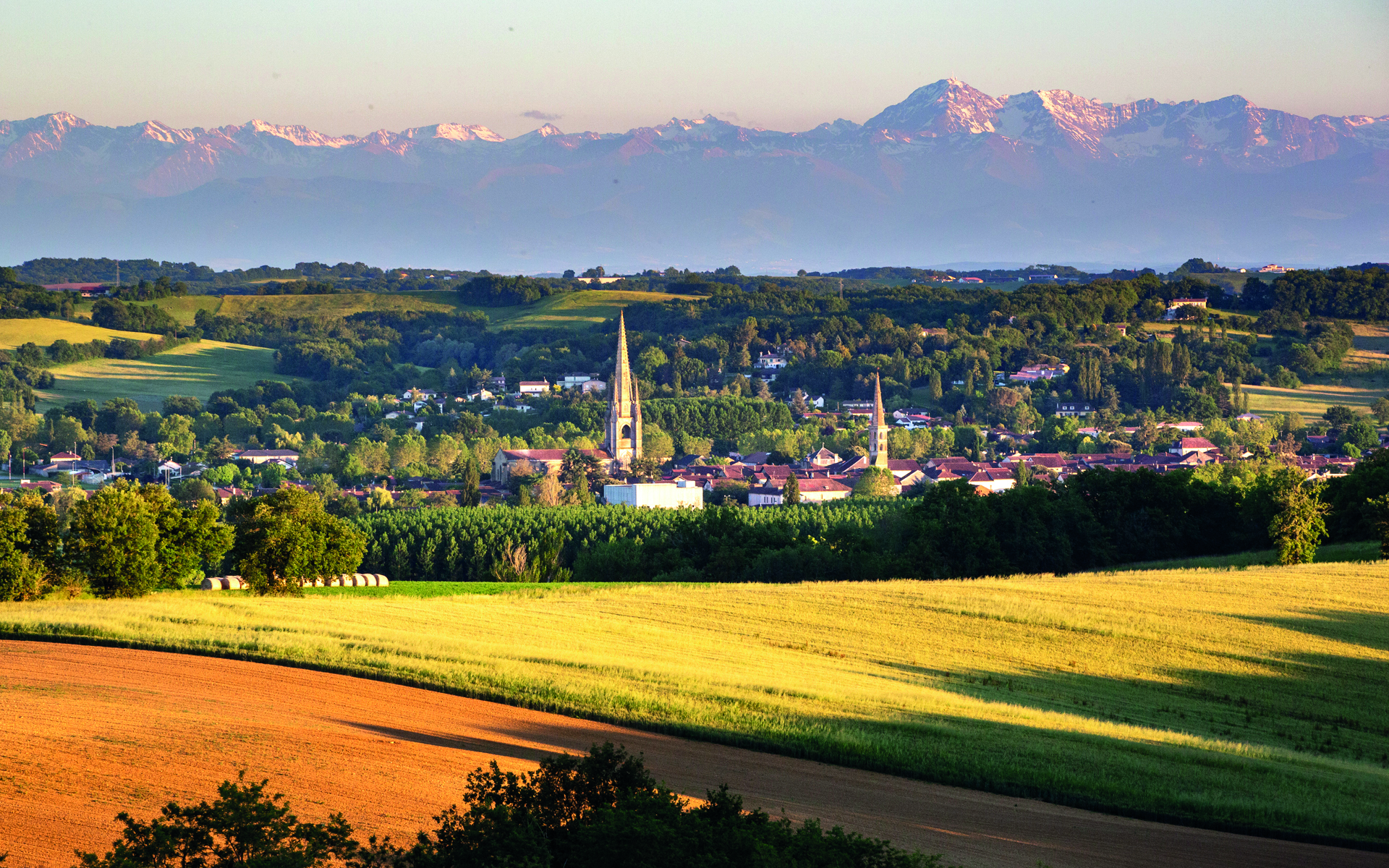
View of Marciac and the Pyrénées, © FRANCIS BELLAMY
In the historic centre of Marciac- an ancient royal bastide (fortified town) – terraced stone houses, often with attic space for conversion, line the two main parallel streets. In the middle there is a central garden made up of strips of individual gardens, explains Xavier Mourrejeau of Mourrejeau Immobilier. There are terraced maisons de maître, with parquet flooring, high moulded ceilings, and gardens. They have a central corridor with two rooms off to the left and to the right and a central staircase leading to the same upstairs. “We have lots of maisons de maître that have retained their noble character,” Xavier says.
If you’re expecting lots of jazz-loving friends to come and stay, prices for a well-renovated example of around 200m² will be €350,000-€400,000. If you aren’t, you’ll pay €1,500/m² for something smaller. Some properties have a garage but street parking is not a problem.
To the south of Marciac there are housing estates within walking distance of town. Here you can buy large villas with 1,000m²-4,000m² gardens. “You lose the cachet of the old, but you have some lovely houses,” says Xavier. For the investor and/or dedicated renovator, he tells me you can buy buildings or large family homes with over 400m² of living space. One such-on the square with two ground-floor shops and accommodation above, with a small courtyard and no garden – could be yours for just over €450,000. At the other end of the scale, he recently sold a two-bedroom town-centre apartment for €80,000. There is a strong long-term let market.
We have lots of historic villages in the surrounding countryside, says Xavier. Have a look at the 13th-century bastide of Bassoues, or Miélan, with a lovely square and market building. The town hall is on its first floor, which is what they often did in those days. The pretty village of Tillac is a castelnau de plaine – houses serried around the château and surrounded by a fortified wall. Montesquiou, another castelnau, is a staging post, with Miélan, on the Via Tolosana, the Arles Way (GR653 for hikers) to Santiago de Compostela.
For Xavier, the plus points of living in Gers are the quality of life: “We eat well, we drink well.” They’re close to the Pyrénées – “within two hours, we’ve put on our skis and are skiing” – and also just two hours from the ocean. We’re happy in the country, he tells me, yet Auch, Tarbes and Aire- sur-Adour are only 40 minutes away. This is also rugby country – “there’s a rugby club every 15 kilometres”, he laughs. There’s a new multi-sport hall with a climbing wall, while the popular Astrada concert hall puts on shows year-round. It’s a dynamic little town centred on culture “and we have a population in Marciac that is much more open-spirited than in other villages,” he adds.
So, cross the Channel by ferry, fly into Nantes- Atlantique, or Tarbes-Lourdes/ Toulouse-Blagnac airports, and whether you’re sipping cider in Coutances, uncorking a gros plant du Pays Nantais, or warming your balloon glass of armagnac – just sit back and enjoy all that jazz.
For More Information, Visit:
Looking for more like this?
Every issue of French Property News delivers in-depth regional buying guides, sound and trusted advice from leading experts, inspirational real life stories, renovation tales and lots of lovely properties to browse.
Lead photo credit : jazz at sunrise © JEAN-MICHEL MEUNIER
Share to: Facebook Twitter LinkedIn Email
More in gascony, Loire-Atlantique, Normany
Leave a reply
Your email address will not be published. Required fields are marked *


